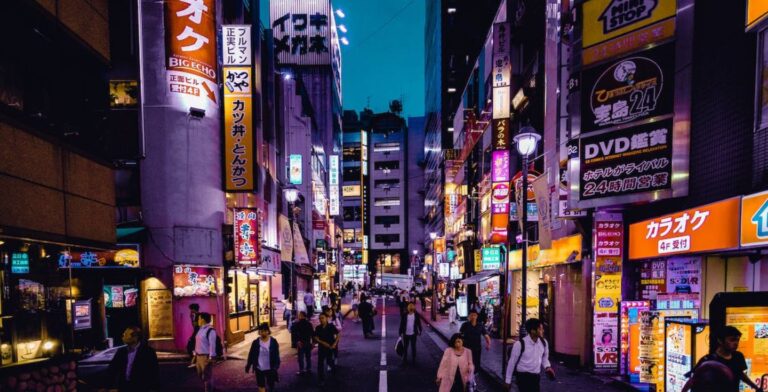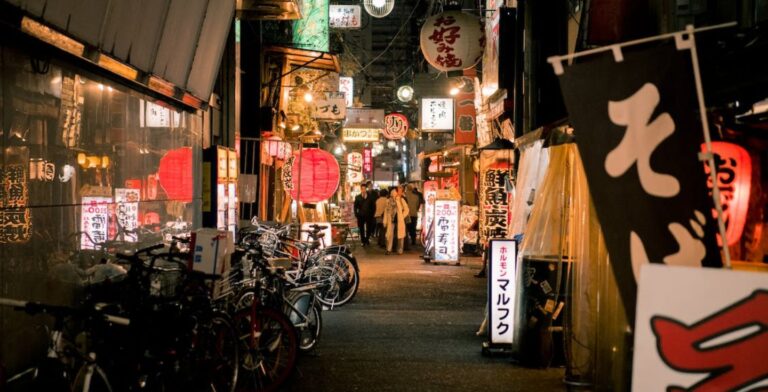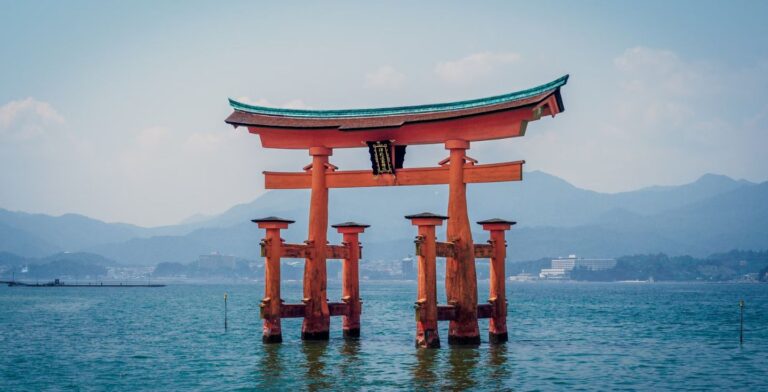Best Time to Travel to Japan
With this guide find out what is the best time to travel to Japan, including holidays, tourist seasons and general tips.


 +1M
+1M
Holafly saves you +30% compared to other roaming fees
Plans that may interest you
Japan is one of the destinations with the most things to see and learn in Asia and the world. One season is the best time to travel to Japan. Cherry blossoms, mild temperatures, and exciting cultural festivals make spring the best time to travel to Japan for a dreamlike vacation. Stay tuned to learn about visiting Japan, from tips and tricks to festivals and tourist hotspots.
Additionally, you must know how you’re going to remain connected abroad. There are plenty of options, but you have to select the one that best suits you.
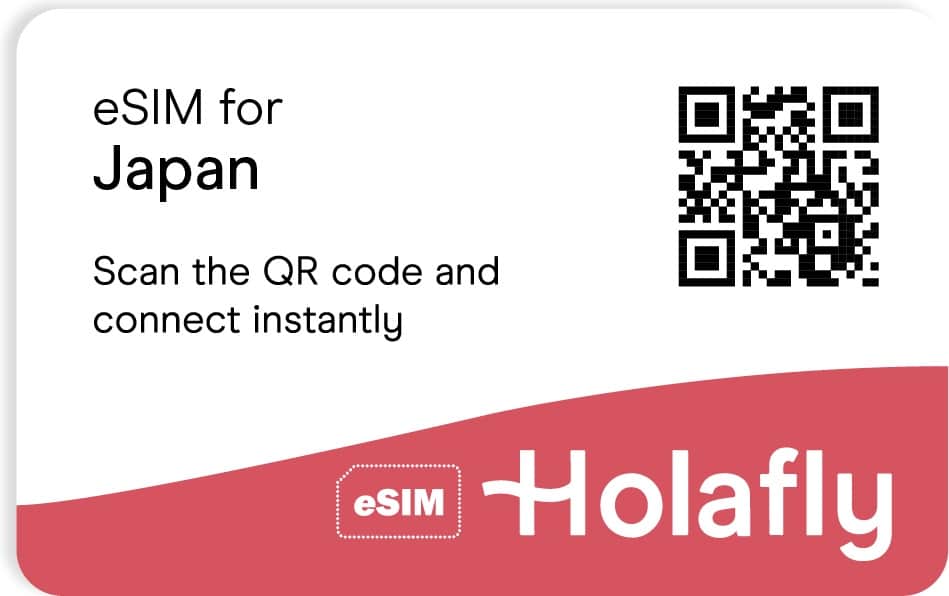
Spring and the Cherry Blossom Season in Japan
Spring in Japan (March through May) is the most popular period to visit, especially when looking to escape the cold. The country goes through a mystical change as the cherry blossoms bloom, turning the scenery pink. The peak cherry blossom season, or “Sakura,” is celebrated tremendously in Japan. Temperatures range from 10 to 20 degrees Celsius, making venturing outside a pleasurable experience.

This is one of the most popular times to visit Japan, as the country’s iconic cherry blossoms bloom in a spectacular display of pink and white. The exact timing of cherry blossom season varies yearly, but it typically starts in late March/early April in southern Japan and progresses northward in late April.
Autumn and beautiful landscapes to visit (September to November)
Koyo (autumn fall foliage): The autumn leaves in Japan turn into a stunning display of red, orange, and yellow. The koyo season starts in the mountains in late September and progresses to lower altitudes in October/ early November.
- Pleasant weather: The weather in autumn is also enjoyable, with mild temperatures and low humidity. Average temperatures range from 15°C (59°F) to 25°C (77°F).
- Cultural events: Autumn is home to many cultural events, such as the Kyoto Momiji and Tokyo festivals.
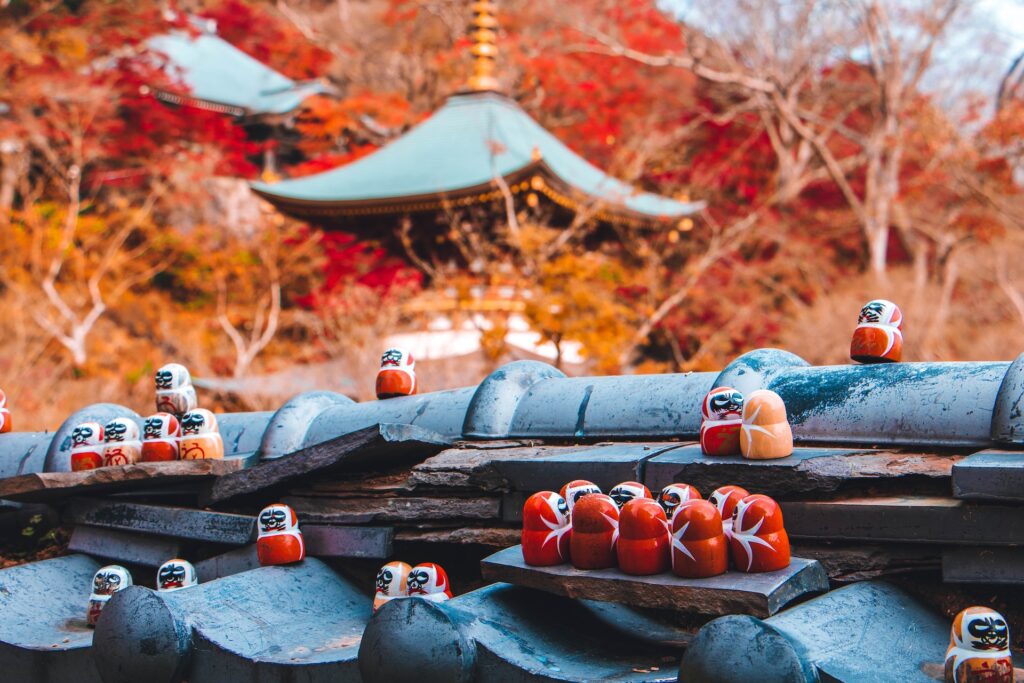
September: The first week of September is another great time to visit Japan, as the weather is still warm and sunny, but the crowds have thinned out. The average temperature in mid-September is around 23°C (73°F), with a good amount of sunshine. This is a great time to enjoy the autumn foliage, which is starting to turn color in the mountains, although it may also coincide with typhoon season.
Winter adventure and ecotourism time (December to February)
Despite the cold temperatures, winter in Japan is also a time of incredible beauty and festivity. The country comes alive with colorful illuminations, festive markets, and traditional events.
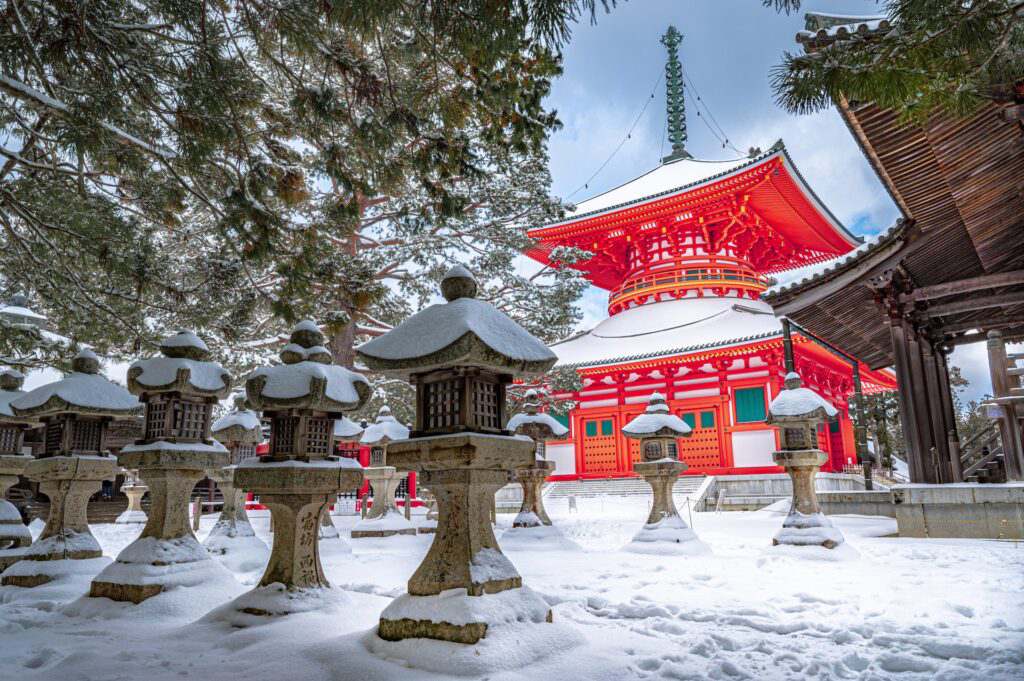
Here are some of the best things to do in Japan in winter
- Skiing and snowboarding: Japan has some of the best ski resorts in the world, with powdery snow and stunning scenery. Hokkaido is the most popular destination for winter sports, but there are also great resorts in other parts of the country, such as Nagano and Niigata.
- Soaking in hot springs: Onsen, or hot springs, are a quintessential part of Japanese culture. There are thousands of onsen all over the country, many of which are located in beautiful natural settings.
- Attending winter festivals: Japan has several winter festivals, such as the Sapporo Snow Festival and the Naeba Ski Resort Snow Monkey Festival. These festivals are a great way to experience Japanese culture and see fantastic ice and snow sculptures.
Visit Japan during the Summer shoulder seasons
The best time to travel in summer is during the shoulder seasons of June and September when the weather is still warm and sunny, but the crowds and prices are lower than in July and August.
June: June is a great time to visit Japan, as the weather is starting to warm up after the rainy season, and the crowds are not as big as they are in the later summer months. The average temperature in June is around 25°C (77°F), with a good amount of sunshine. This is a great time to enjoy outdoor activities like hiking, biking, and exploring the city.
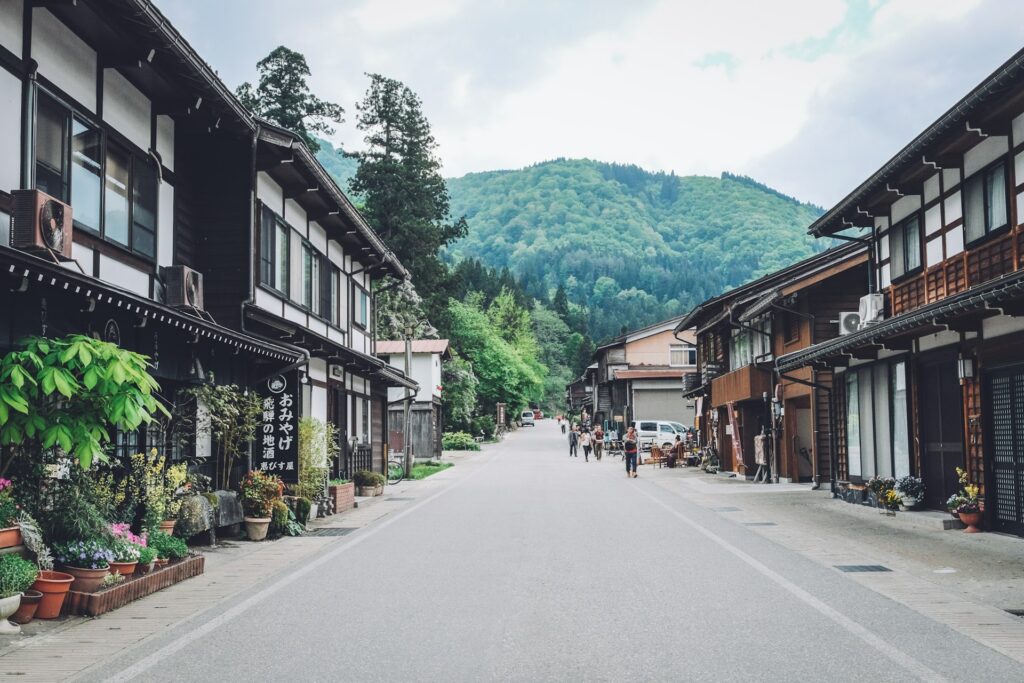
July and August: July and August are Japan’s hottest and busiest months. The average temperature in July is around 28°C (82°F), and in August it is around 29°C (84°F). The humidity is also high during these months, making it uncomfortable for some people. Suppose you are planning to visit Japan in July or August. In that case, booking your accommodations and activities in advance is essential, as prices and availability will be higher.
Festivals and Events: Summer is a great time to experience Japanese culture, as many festivals and events occur throughout the country. Some of the most popular summer festivals include:
- Gion Matsuri: A large festival in Kyoto with traditional processions and floats.
- Nebuta Matsuri: A festival in Aomori with giant illuminated floats.
- Tenjin Matsuri: A festival in Osaka with fireworks and dragon boat races.
- Tanabata: A festival celebrating the stars and featuring colorful streamers and paper wishes.
Must-See Places
Start your trip off in Tokyo, where the past and present coexist in perfect harmony. Ueno ParkShinjuku Gyoen and Chidorigafuchi all offer stunning views of the city’s vibrant life. All simultaneously, set against the backdrop of nature during the cherry blossom viewing season. Don’t miss out on the breathtaking scenery of cherry blossoms surrounding Tokyo Tower.
Visit Kyoto, where the blossoming of its many temples and gardens signals the arrival of spring, the best time to travel to Japan. Go to the famous Kiyomizu-dera and the world-famous Fushimi Inari Taisha while the cherry blossoms are full. The Philosopher’s Path is another must-see, offering a tranquil promenade beneath cherry blossom canopies.
Stop by Hiroshima Peace Memorial Park and pay your respects among the cherry blossom trees, a symbol of rebirth—the city’s lively energy and moving history test Japan’s resiliency.
Enjoy the cherry blossoms at Osaka Castle Park Kema Sakuranomiya Park while indulging in the city’s culinary delights. Osaka, is a gastronomic paradise in full bloom. Foodies will love this city for its vibrant street food culture.
(Traveling to the USA. Find out how to connect with the USA eSIM!)
Hidden Gems
Even beyond the major cities of Tokyo, Kyoto, and Osaka, Japan is full of lesser-known jewels that provide a more personal experience. In the spring, you might want to go to any of these less-visited places.
Kanazawa, Japan
The beautiful Kenrokuen Garden, one of Japan’s most renowned traditional gardens, can be found in Kanazawa. It is known for its preserved samurai and geisha districts. Stroll through the cherry blossoms, take in the stunning scenery, and enjoy peace and quiet away from the crowds.
Takayama, Japan
Traditional wooden buildings and businesses line the alleys of Takayama’s old town, transporting visitors back in time. One of Japan’s most beautiful and well-known festivals, the Takayama Festival, is held in the spring.
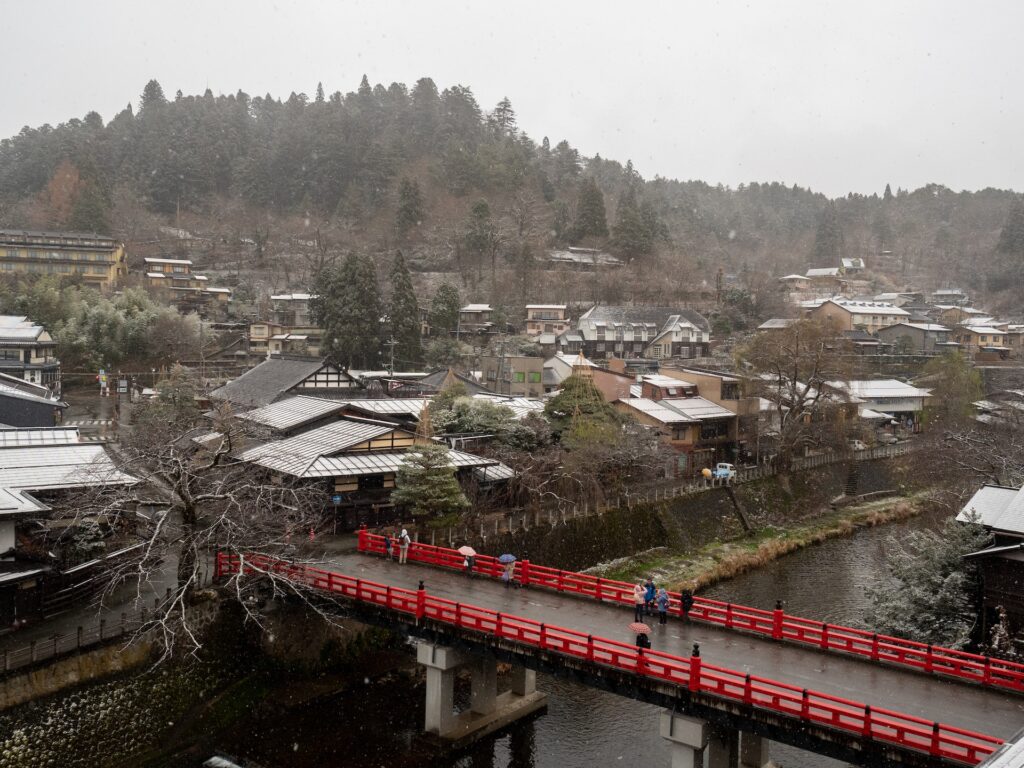
Miyajima, Japan
Miyajima, often known as “The Island of Gods,” is a tranquil getaway near Hiroshima known for its floating Torii gate and tame wild deer. Admire the serene Seto Inland Sea from the cherry blossom-lined grounds of Itsukushima Shrine.
Most important festivities and best time travel Japan
Japan is a vibrant and dynamic country with a rich culture and history, evident in its numerous festivals and events throughout the year. Here are some of the most important festivities and the best time to travel to Japan to experience them
The Cherry Blossom Festival: A Spectacular Cultural Event
Take part in the time-honored custom of “flower viewing” or “hanami.” To appreciate the fleeting beauty of the cherry blossoms, you should join the locals in a picnic under one. Here’s your chance to mingle with locals and learn about Japan’s fascinating culture during the best time to travel to Japan.
During the springtime, many communities around Japan celebrate the arrival of cherry blossoms with events known as Sakura Matsuri. Many urban centers hold parades, entertainment, and outdoor food markets to commemorate this enchanted season. Tokyo’s Sumida Park hosts the Sumida Park Cherry Blossom Festival, while Aomori Prefecture’s Hirosaki hosts the Hirosaki Cherry Blossom Festival. Nagano Prefecture’s Takato Castle Ruins hosts the Takato Castle Ruins Cherry Blossom Festival.
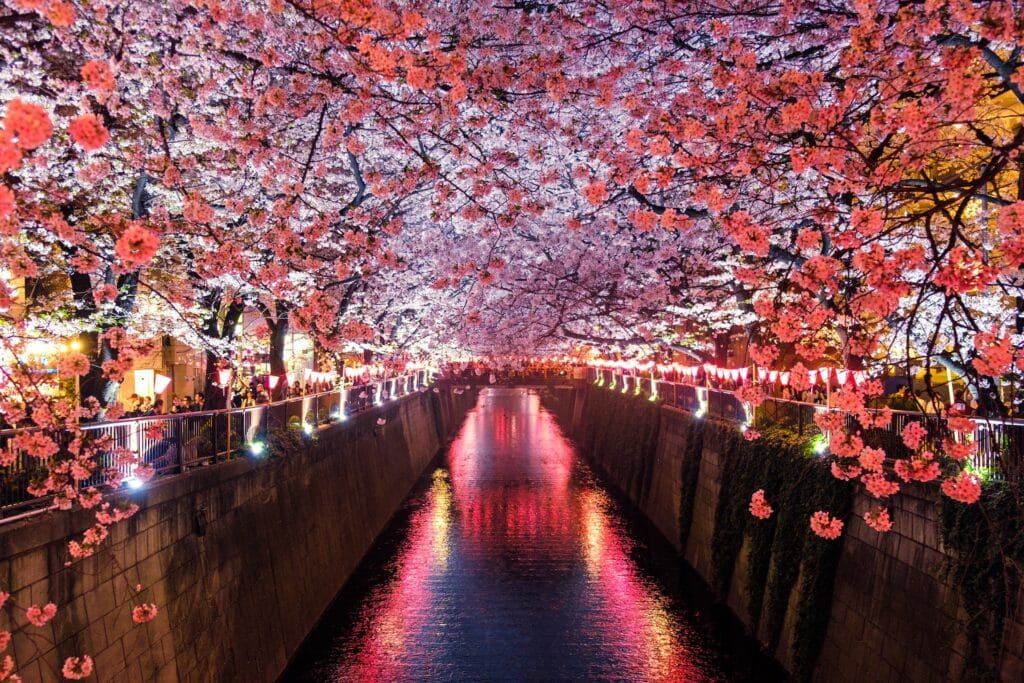
Golden Week (April 29-May 6)
Golden Week is one of Japan’s most extended holidays, consisting of four national holidays. This is a great time to experience the country’s bustling cities and popular tourist attractions but be prepared for large crowds.
Obon (Mid-July to Mid-August)
Obon is a Buddhist holiday that honors the ancestors. Families gather to visit their ancestors’ graves and pay their respects during this time. Obon is also a time for festivals and events like the Bon Odori dance.
New Year’s (January 1-3)
New Year’s is a major holiday in Japan, and many temples and shrines hold special events to celebrate the new year. This is a great time to experience traditional Japanese culture and customs.

Other Holidays and Festivals
In addition to the major holidays listed above, Japan has many other festivals and events throughout the year. Some of these include:
- Setsubun (February 3): A festival to ward off evil spirits and welcome good luck in the new year.
- Hinamatsuri (March 3): A festival celebrating girls and featuring displays of dolls in traditional costumes.
- Tanabata (July 7): A festival celebrating the stars and featuring colorful streamers and paper wishes.
- Gion Matsuri (July 16-23): A large festival in Kyoto with traditional processions and floats.
When planning your trip to Japan, consider the dates of these holidays and festivals to make the most of your experience.
How to get around
Japan has a truly marvelous and developed transportation infrastructure. Get around with a Japan Rail Pass. Foreign travelers who wish to travel between cities in Japan can buy a Japan Rail Pass. This pass provides an easy and affordable method to travel on any of JR’s trains, including the Shinkansen (bullet train). Use subways and buses for local travel within cities. Rent bicycles and take your time pedaling about Kyoto and Hiroshima, two beautiful cities in the spring.
Proper Protocol and the Value of History
When greeting natives, it is appropriate to bow slightly out of respect. Positive relationships can be significantly enhanced by simply smiling and saying “Konnichiwa” (hello) or “Arigatou gozaimasu” (thank you) in Japanese. Visitors should wash their bodies thoroughly before entering an onsen (hot springs), preparing for the community bath. Find out what not to do as a foreigner in Japan during your stay.
What to Bring
- Varied Clothing: Bring a variety of thin sweaters, long-sleeved shirts, and a lightweight jacket to adjust to the season’s shifting temperatures.
- Comfortable Footwear: You will be walking a lot while touring the cities of Japan, so be sure to bring a good pair of walking shoes.
- Power Adapter: Ensure all your electronics stay charged with a universal power adapter.
- Cash and Cards: Despite the country’s superior technology, cash is still the preferred payment method in Japan. Keep both hard currency and plastic on hand.
Suggestions for a More Fulfilling Adventure
- Plan your vacation around the peak blooming season by keeping up with the cherry blossom forecast, often given a few months before spring.
- Peace and quiet, first thing in the morning: See the top sights before the masses arrive and snap your best photos.
- While many Japanese people do know English, it will help you get around more quickly if you learn a few simple words in the native tongue.
- Adopt the conventions of the area you’re visiting, such as taking off your shoes before entering a house of worship or shaking hands with both hands after getting anything.
Tips for a Safe Trip to Japan
- Travel Insurance: Get yourself fully covered by travel insurance in case of any issues that may arise while you’re away.
- Earthquake Preparation: Japan is prone to earthquakes. Learn what to do in an emergency and heed local authorities’ instructions in case of a quake.
- Food Allergies/Restrictions: If you have food allergies or dietary restrictions, you should learn Japanese or carry a translation card. This will help you explain your needs when dining out.
>You might be interested in how to travel to Japan from Canada<
Get an Internet Connection
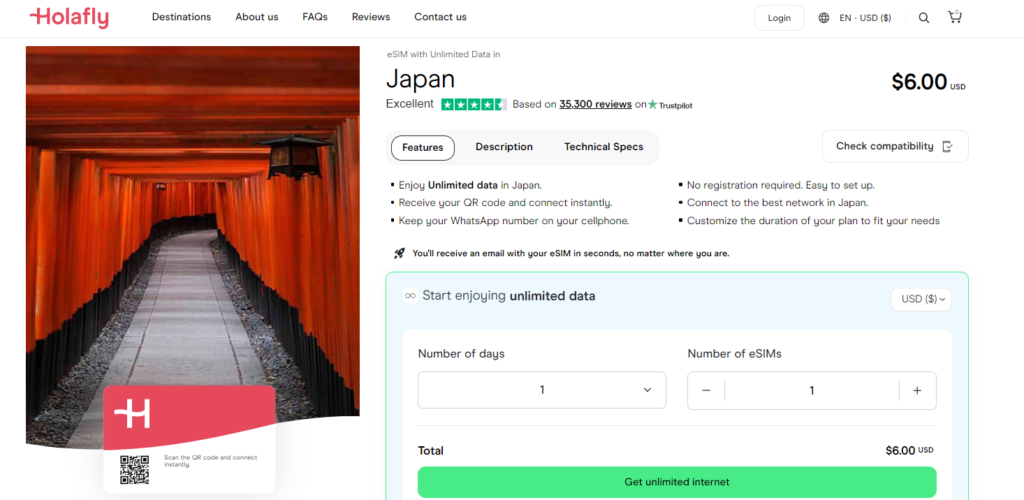
Having a data connection when visiting Japan brings plenty of benefits and helps you make your trip a lot more comfortable. You can use navigation apps to check real-time information about local events and emergencies.
Additionally, you’ll have access to translation apps, making it easier to navigate Japan’s complex public transit system. Having internet access allows you to use travel apps, make online bookings and reservations, and research Japan’s tourist spots.
You can get pocket WiFi, roaming services, a local SIM chip, or even local free WiFi. But what’s currently taking the spotlight is the Holafly eSIM in Japan or the best eSIM plans for tourism within Asia. This is a virtual SIM card that’s embedded in high-end compatible smartphones, and from their website, get a data plan. All you have to do is buy, scan and connect!
You can get an eSIM from their website or the app. Have the adventure of a lifetime with the seamless Holafly digital card. Enjoy unlimited data and 500 MB per day to share data via hotspot with any of the plans available with Holafly.
FAQ about best time travel to Japan
When should you visit Japan for a vacation? The best times to visit Japan are spring (March to May) and autumn (September to November). At this moment, the Japanese are vibrant, with delicate cherries and a bright red leaf contrasting with its surroundings. Remember, this can be a hectic time.
The most crowded month in Japan: late April to early May (aka “Golden week”). Least crowded months in Japan: January – April are the least popular months for visiting, as these are cheaper prices.
A week’s trip is expected not to be enough to see everything extraordinary in Japan. The truth is that within a week, you can visit two or three destinations without any problem thanks to the ease of transportation. You can expect to spend between 1000 and 1500 USD depending on your plans. So if your itinerary and budget are tight, a week could be the ideal time to visit this destination.
As long as you have a compatible phone, the fastest and safest way to stay connected is with an eSIM for Japan with unlimited data. Holafly offers plans for this destination that are easy to purchase for tourists and cannot restrict your phone usage by data or cost.




 No results found
No results found



